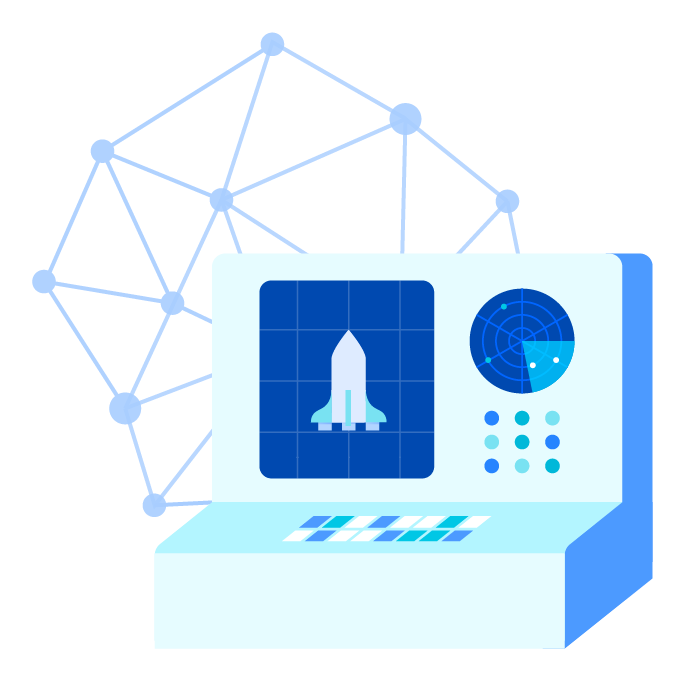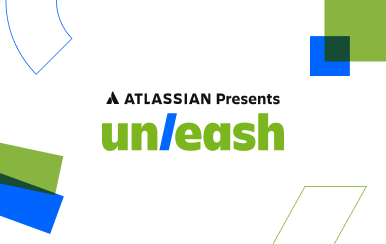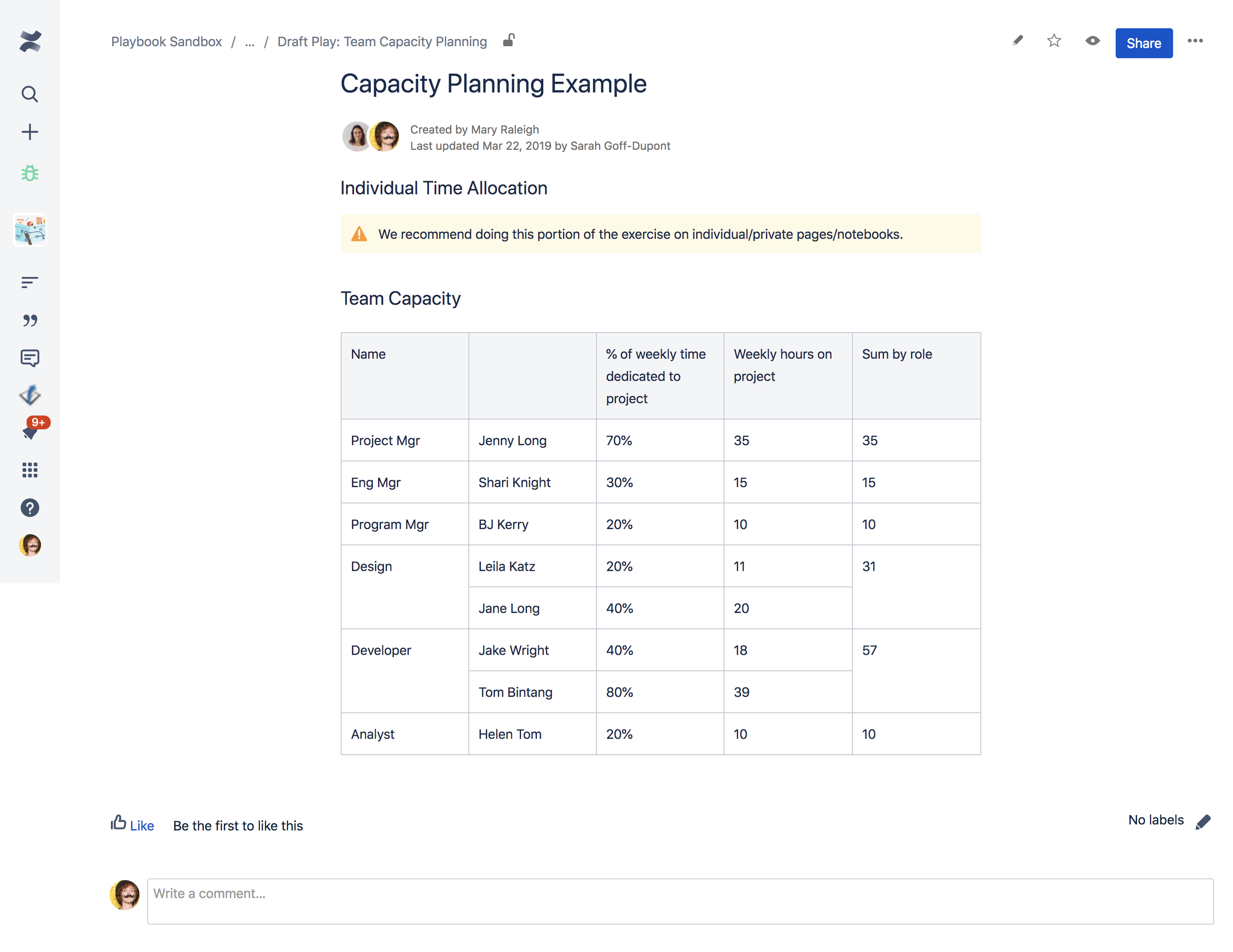IT Project Kick-off
You’ve got the idea. You’ve got the business commit. Now, use this kick-off technique to set your IT project up for success.
USE THIS PLAY TO...
Align your team on milestones, scope, and purpose.
Set your IT project up for success.
If you're struggling with on your Health Monitor, running this play might help.


People
Whole team

Prep Time
15 min

Time
60 - 90 min

Difficulty
Moderate
Running the play
Don’t try to do all of the activities below in one meeting (or it might be the last meeting invite everyone accepts from you). Use the guide below and your own judgment to pick 3-4 of the following “express” versions of our favorite plays for IT teams.
Prep
Craft your agenda (15 min)
Look through the kick-off activities below and choose the ones that fit your project best. Need help? Here are a few suggestions based on the type of project.
Compliance – Projects that involve implementing changes to conform to rules, laws, policies, and/or standards of governance imposed by regulatory bodies or government agencies.
Core kick-off activities:
- Dependency mapping
- Prioritize, as a team
- Stakeholder communications plan
Business transformation – Projects that seek to modernize your business model. They may involve your network architecture, hardware, software, IT service management practices, and/or how information is stored.
Core kick-off activities:
- Elevator pitch
- Prioritize, as a team
- Dependency mapping
- DACI
Incubation – Projects that involve the early stages of experimentation, with the goal of creating new business capabilities.
Core kick-off activities:
- Rules of engagement
- Elevator pitch
- Milestone mapping
What if none of these project categories apply to you? Just pick a place to start. (Honestly, you’re already ahead of the game by having scheduled a project kick-off. Most teams don’t do these activities until after the pain is so bad they can’t ignore it!)
Pro Tip
Kicking off your project happens as you move from scoping into execution mode. Make sure you’ve completed an IT Project Poster prior to your kick-off so everyone enters the room with the same context.
Step 1
Set the stage (5 min)
Welcome the group and thank everyone for taking the time to be there. Walk through the agenda you've chosen, but don't spend time going into a ton of detail about each activity.
If this is the first time this group has gathered together go around the room and ask everyone to share their name, role in the project, and a fun fact about themselves. (Ideas: Coffee, tea, or soda? Can you remember a bumper sticker that made you smile? What is your superhero name? What will be the title of your autobiography? Where would you vacation if money were no object? What animal would you choose to be, and why?)
Ask everyone to keep their intro under 30 seconds – you have a lot to cover in this meeting!
Step 2
Dive into your kick-off activities (40 - 60 min)
CAPACITY PLANNING (10 MIN)
Ask everyone to write down all the activities that take up their typical week (work on various projects, bug fixing, incident response, administrative tasks, recurring meetings, coffee runs, unplanned hallway chats, 1:1s, etc.). Estimate the hours spent on each category.
Summarize the team’s capacity in a table. Group all individuals in the same role, record their role, name and weekly hours spent on this project. Total the hours available by role.
PRIORITIZE, AS A TEAM (15 MIN)
As a group, brainstorm all the tasks you need to complete in order to deliver on your project's goals. Write each task on its own index card. On the back of each index card, note whether and how the task relates to other ones. Dependency relationships are especially important to call out – e.g., "depends on", "is depended on by".
Ready..set…prioritize! Sort and rank all the tasks by arranging their cards on the table or wall. If you have more than 15 tasks, consider grouping them into categories of work and prioritizing within each category.
Define your considerations when determining whether a task should be above or below the “OK to drop” line. Once you’ve agreed on the criteria, draw the line for your stack ranked tasks.
Pay attention to the dependencies. Don't rank a task low-priority if there are ten other tasks that depend on it!
RULES OF ENGAGEMENT (15 MIN)
Ask the group to brainstorm the rules and norms you want the whole team to abide by. Record each one on its own post-it.
Share your ideas by one-by-one, sticking your post-its to a space on a wall. Group common ideas together.
Call out where there is broad agreement and debate areas of contention to come to an agreement. Once you’ve aligned, discuss how you will bring these rules to life moving forward and record actions to take.
ROLES & RESPONSIBILITIES (20 MIN)
Define what roles there are in the team and group/seat people together who do the same role.
Have each group write down their top 3-5 responsibilities and the top 1-2 responsibilities of every other role.
Post each self-reported and team-reported responsibility in a table with the each role as the row headers and “what I think I do” and “what others think I do” as the column headers. Discuss the gaps between self- and team-reported responsibilities and make note of all responsibilities that have no owner.
DEPENDENCY MAPPING (15 MIN)
Brainstorm systems, teams, and other projects affected by your project. For each, assign an owner who will be responsible for filling out the type of dependency and description.
Rattle off all that could potentially go wrong on the project. After you’ve gotten that all off your chests, remove all the low impact, unlikely risks. For the rest, rank the potential impact level as high, medium, or low and assign an owner for each. The owner will be responsible for drafting a mitigation plan and identifying an owner for that mitigation plan.
Now is the time to figure out how you’ll keep ahead of all these dependencies and risks throughout the life of the project. As a group, list all the stakeholders relevant to the previously brainstormed risks and dependencies. For each stakeholder define the cadence with which you will communicate (weekly, monthly, quarterly, ad hoc).
MILESTONE MAPPING (10 MIN)
On a whiteboard or poster paper, draw a horizontal line. Mark the left end as “today” and leave the right end unmarked. As a group, populate known milestones that have already been agreed upon for this project.
Remember that milestones are points in which you are delivering customer value. We recommend organizing your work around shipping iteratively and getting feedback often.
ELEVATOR PITCH (10 MIN)
Ask everyone to complete the following statement for the project at hand. Try to create 2-3 versions per person. We find the more we do, the better they get!
For [TARGET CUSTOMER TYPE] who want to [NEED / DESIRE], [SOLUTION] is a [TYPE OF DELIVERABLE] that [KEY BENEFIT].
Ask everyone to share their best pitch with the group. Discuss and get to a “good enough” collective version while making sure to limit your discussion to ~5 min. You can always refine it asynchronously later!
DACI (10 MIN)
Ask everyone to call out who should be the default Driver (D), Approver (A), Contributors (C), and Informed (I) for decisions about the project.
D = Driver. The person responsible for corralling stakeholders, collating all the necessary information, and getting a decision made by the agreed date. This may or may not be the project's full-time owner, depending on the decision.
A = Approver. The one person who makes the decision.
C = Contributors. They have knowledge or expertise that may influence the decision – i.e., they have a voice, but no vote.
I = Informed. They are informed of the final decision.
Record the agreed upon roles on a page and circulate to all relevant stakeholders.
STAKEHOLDER COMMUNICATIONS (15 MIN)
Brainstorm all the “stakeholders” within and outside of your team. For each stakeholder group (i.e., your target audience) define their relationship to the project. Are they a decision maker? Sparring partner? Expert contributor? Remover of roadblocks? Make sure to include the team itself!
Determine the most effective way to communicate with each audience. Think about what content you'll be sharing, as well as the tool you'll use to share it. For example, with your direct team, you might choose to communicate through a chat room dedicated to sharing minor updates and asking for input from each other.
Create a table with the following rows:
- Daily
- Weekly
- Fortnightly
- Monthly
- Quarterly
- Yearly
- Ad hoc
For each frequency, write down the audience you'll communicate with, the channels you'll use, what you'll communicate, and links to further details or artifacts.
If you run out of time after the first two steps, this step can be assigned to an owner to do after the meeting.

For example...
Here's what a typical team capacity table might look like.
Step 3
Wrap-up and next steps (10 min)
That probably felt like a lot to cover in 60-90 minutes. Look back at the activities you completed and summarize all the open actions.
Take five minutes before you leave to ask everyone how they feel about the team’s ability to achieve your project’s goals. Ask everyone to simultaneously vote with their thumbs: thumbs up = confident, yellow = have some questions, red = have some concerns.
Once the votes are revealed, have a short discussion about the ratings. Agree on actions or a check-in process to monitor the reasons given for red and yellow votes.
Nailed it?
Be sure to run a full Health Monitor session or checkpoint with your team to see if you're improving.
Variations
This is truly a choose your own adventure play, so you can do any combination of the nine plays and be ten steps ahead of most projects just by having had these discussions early in your project!
Most of the plays featured within this play are also standalone plays that can be setup as a separate session. If you feel your team needs extra time, do only 1-2 plays as part of your project kick-off and reference the full play instructions for the extended agenda instructions.
Follow-ups
We recommend monthly Health Monitors to check in on the health of your team and project.
Want even more Playbook?
Drop your email below to be notified when we add new Health Monitors and plays.
Got feedback?
Drop a question or comment on the Atlassian Community site.

